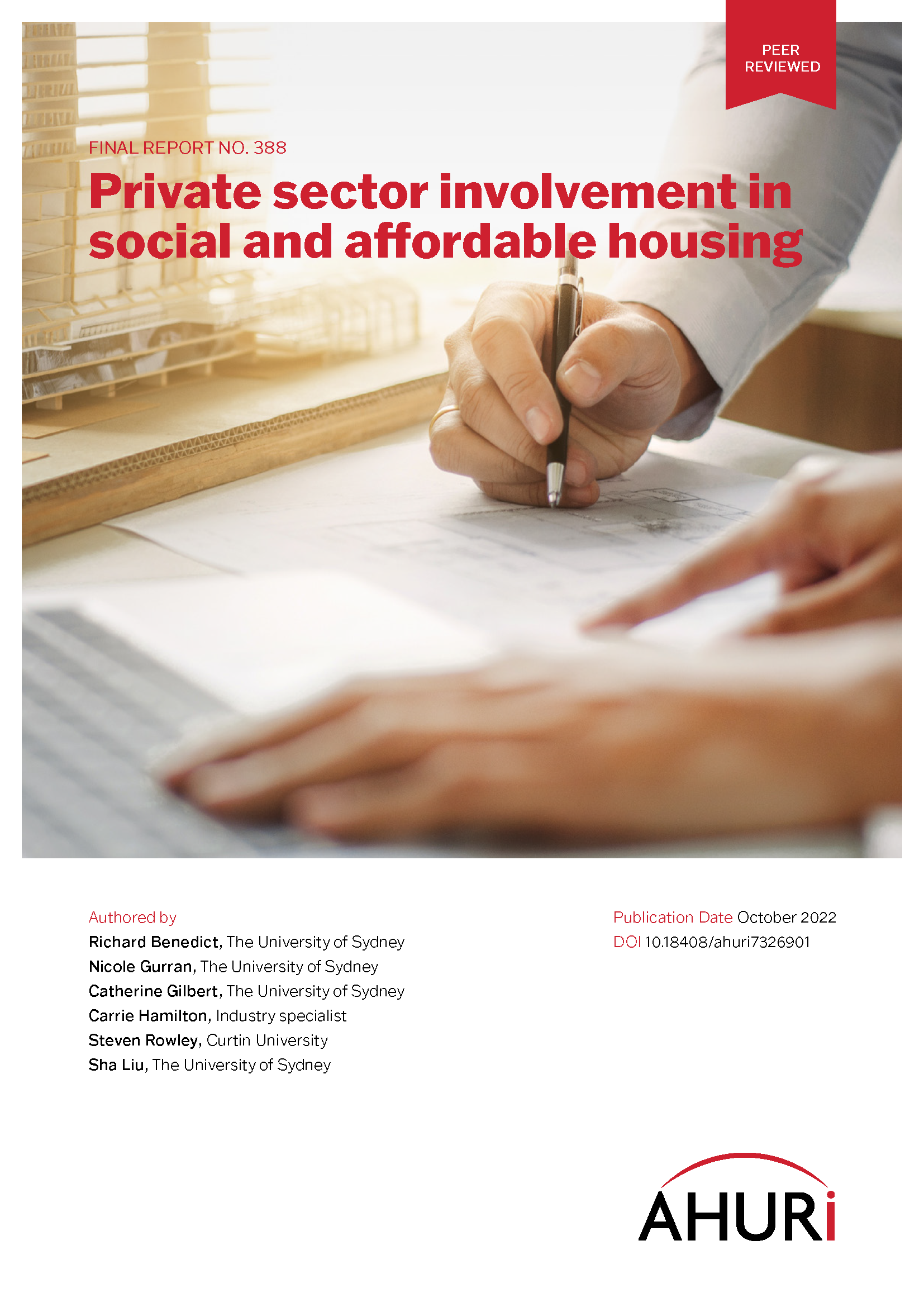
Stimulating private sector development of social and affordable housing
13 Oct 2022
No one sector can supply Australia’s needed social and affordable housing, increasingly it needs to be financed, developed and managed by partnerships of government, community-based and market providers, according to new AHURI research.
Governments increasingly recognise the scope for collaboration with private investors and institutions to boost finance for social and affordable housing.
The research, ‘Private sector involvement in social and affordable housing’, undertaken for AHURI by researchers from the University of Sydney and Curtin University investigates models for engaging private sector investors and developers in financing and delivering social and affordable housing. It also identifies the financial, regulatory, or development barriers that may prevent more financiers and developers being involved.
‘In Australia we need around 36,000 new social and affordable homes each year; prior to the COVID-19 pandemic we produced about 3,000’ says lead researcher Mr Richard Benedict of the University of Sydney. ‘To meet the demand, it is clear forms of ‘hybridity’ of the housing system are essential, whereby social and affordable housing is increasingly financed, developed and managed by a combination of government, community-based and market providers, and cross-sector partnerships; no one sector can address the need alone.’
The research revealed that several institutional investors and superannuation funds had a level of interest in investing in social and affordable housing in times of low interest rates despite the fact that yields are typically lower than in other forms of residential investment. Lower yields were seen to be offset by lower risk in the social and affordable rental sector, which some participants advised holds value for longer than market rate rental, thus appealing to institutional investors. However, there are geographical differences in investment appetite, with institutional investors reported being more focused on Sydney and Melbourne where demand is consistently high.
Participants emphasised that private investment in affordable housing for low and very low-income earners will always require some government subsidy or capital contribution. It is clear from the international evidence that private involvement should be viewed as a way of extending, rather than replacing, public subsidy to house low-income earners and those with special needs. A partial alternative to direct government subsidy is to reduce project costs, such as by providing access to government land or using inclusionary planning mechanisms.
Overall this study highlighted that a range of established and emerging affordable housing product types can be supported through collaboration with private not-for-profit and for-profit partners. These depend on different combinations of government subsidy, policy settings, and regulation, and are suitable for delivery across a variety of different development contexts.
However, private sector investors participating in the research also identified barriers and risks that must be addressed if the private sector is to support a significant increase in social and affordable housing. Changes in government, changed and discontinued policies and programs and a lack of continuity across political and bureaucratic leadership undermine opportunities to expand social and affordable housing through private sector involvement. They emphasised that certainty is essential for investor confidence, across all regulatory and program settings. In addition, development challenges included lack of access to suitable sites; labour shortages; and long, complex government tendering and planning approval processes.
Participants also warned of risks to government, community or specialist housing organisations and residents arising from poorly designed processes. These risks included the ‘leaking’ of public assets and subsidies; inefficient and poor delivery of projects; tenant disruption; and the diversion of resources and opportunities from the community housing sector. While increased private involvement in social or affordable housing schemes can present a reputational risk to government, risks could be mitigated through strong due diligence and effective regulation and oversight by government.

